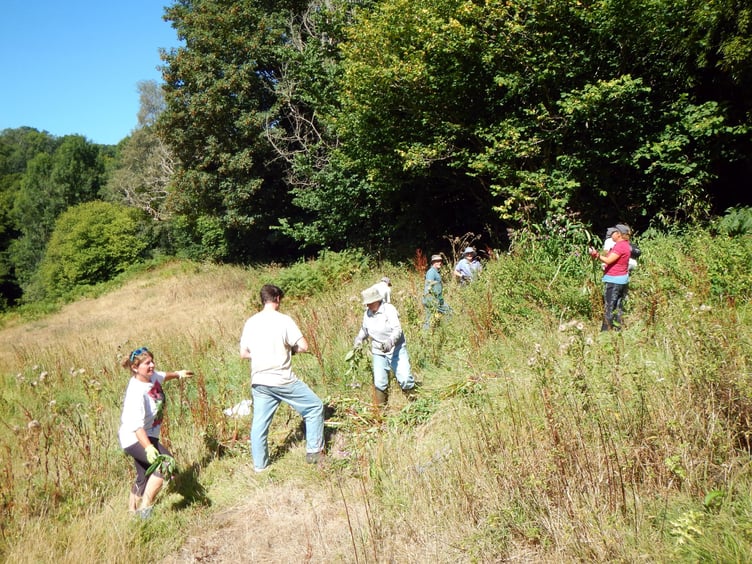VOLUNTEERS took to Lustleigh and other areas on Dartmoor National Park to help tackle the growing outbreaks of invasive plants.
The invasion of non-native species can be extremely costly and difficult to manage if allowed to establish. They have been increasingly threatening Dartmoor’s precious wildlife and habitats by displacing native plants and disrupting ecosystems.
The focus is now on Himalayan Balsam, a plant with pink flowers and ‘exploding’ seed pods. Introduced in 1839, Balsam escaped from British gardens and has now come to dominate wet habitats such as riverbeds and forests. Balsam can shoot its seeds distances of up to four metres and can grow up to 2.5 metres high, making it spread fast and leaving little space for other native species to survive.
This plant is now a familiar sight on streams and rivers. However, a group of volunteers in Lustleigh spent a swelteringly hot day this week fighting the spread.
While the village remained beautiful, the signs of invasive plants were all around.
Hazel Murkin, a volunteer from Bovey Tracey, said: ‘I remember when I was young, I read about the stuff in a book, but since then, the problem has become larger and larger.’
Sue, a volunteer from Haytor Vale, said: I first saw patches of it emerging several years ago and you barely take notice of it, but soon you notice that it’s taking over and the damage it’s doing, blanketing the entirety of meadows and woodland – It’s really bad over at Stover Canal.’
Volunteers spent the day rambling through meadows, forests and undergrowth, searching for and pulling up the pesky plant, in an effort to stop it from seeding and spreading. Volunteers were also on the lookout for any signs of another invader called the American Skunk Cabbage: a giant Lilly with yellow flowers.
Mervyn Newman, who organised the day and coordinates projects across Dartmoor, said: ‘The Balsam can be a bit of a pantomime plant, when you pull one out of the ground, you turn around and there’s another. That’s why it’s so great to get as many volunteers as possible, as it splits up the work and makes our work much more effective.’
Volunteers were driven by their love of Dartmoor and their desire to preserve it.
Hazel said: ‘I know Lustleigh so well and I’ve always loved walking here, but after doing so for many many years I started to notice the Balsam more and more and became really concerned about it. So I thought why not combine my concern with my enjoyment of the moor and volunteer?’
The best way of managing it is to pull the plant up before the seed pod pops and spreads, although make sure you do it with the landowner’s permission. Mervyn also urged gardeners to keep an eye on their garden and not to throw plant waste over the hedge, as it can easily spread across the moorland.
Looking forward, volunteers will continue to work in Lustleigh, as well as South Brent and Princetown.
l To get involved, email: [email protected].





Comments
This article has no comments yet. Be the first to leave a comment.